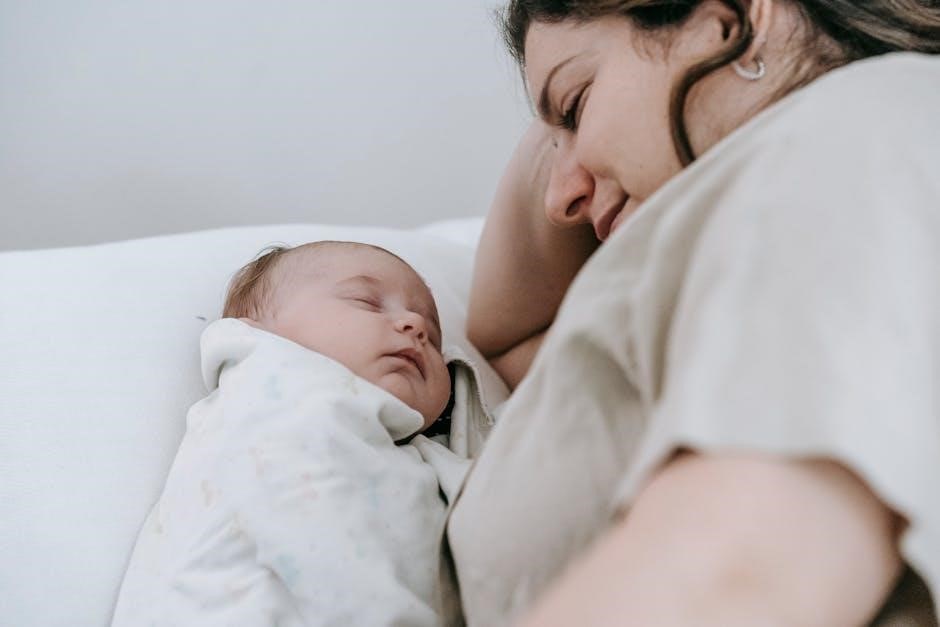
Discover the ideal baby sleep bag with our comprehensive TOG guide! Learn how to choose the right rating for year-round comfort․ TOG, or Thermal Overall Grade, measures warmth․ Higher TOG values mean warmer, more insulated bags, ensuring your baby sleeps soundly and safely․
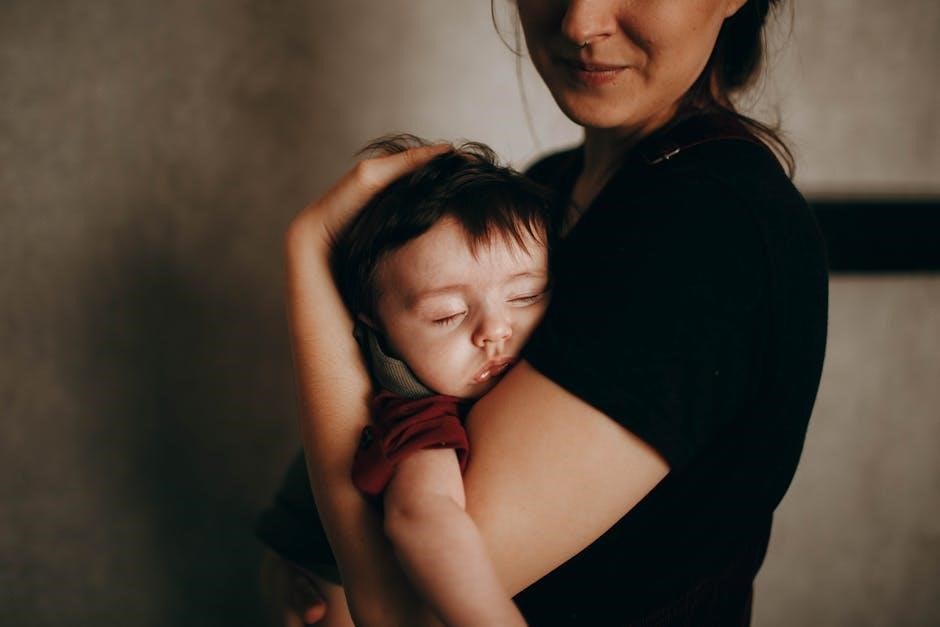
What is a TOG Rating?
When selecting baby sleepwear, understanding the TOG rating is crucial․ TOG, which stands for Thermal Overall Grade, is a standard measurement used in the textile industry, especially for baby sleep bags and swaddles, to indicate the warmth or insulation level of a garment․ It essentially tells you how well the sleep bag will keep your baby warm․ Most manufacturers rate their sleep sacks and swaddle bags between 0․2 and 3․5 TOG․ The key takeaway is that a higher TOG rating signifies a warmer and more insulated product․ This rating helps parents determine the appropriate sleep bag for their baby based on the room temperature, ensuring they are neither too hot nor too cold during sleep․ Babies typically learn to regulate their own body temperature around 1․5 to 2 years old, so relying on TOG ratings is essential for younger infants․ By using TOG ratings, you can adjust your baby’s clothing layers accordingly, ensuring they are comfortable throughout the night․ Remember to monitor your baby for signs of overheating, such as warm skin, flushed cheeks, a sweaty neck, or rapid breathing․ A versatile sleep bag with removable sleeves can be used across a wide range of temperatures, making it a practical choice for varying seasons․ All reputable baby sleep bags are tested to conform to safety standards, providing peace of mind for parents․
Understanding TOG Values for Different Temperatures
Understanding TOG values in relation to room temperature is essential for ensuring your baby’s comfort and safety during sleep․ TOG ratings indicate the thermal resistance of a sleep bag, which helps you determine how warm it will keep your baby․ Different TOG values are suitable for different room temperatures․ For example, a 0․5 TOG sleep bag is ideal for warm summer nights or rooms with temperatures above 24°C (75°F)․ A 1․0 TOG sleep bag is suitable for warmer weather and rooms between 20°C to 24°C (68°F to 75°F)․ A 2․5 TOG sleep bag is a versatile option for year-round use, ideal for temperatures between 16°C and 20°C (61°F to 68°F)․ For colder conditions, with room temperatures below 16°C (61°F), a higher TOG rating of 3․5 to 4․5 or higher may be appropriate to provide better insulation․ Adjusting your baby’s clothing based on the TOG rating and the room temperature is crucial․ In warmer conditions, a lighter TOG rating with minimal clothing is best to prevent overheating․ In cooler conditions, a higher TOG rating with additional layers of clothing can help keep your baby warm․ Always monitor your baby for signs of being too hot or too cold, and adjust the TOG rating and clothing accordingly․ Remember that these are general guidelines, and individual babies may have different needs based on their metabolism and other factors․ Using a room thermometer can help you accurately determine the temperature and select the appropriate TOG rating for your baby’s sleep bag․
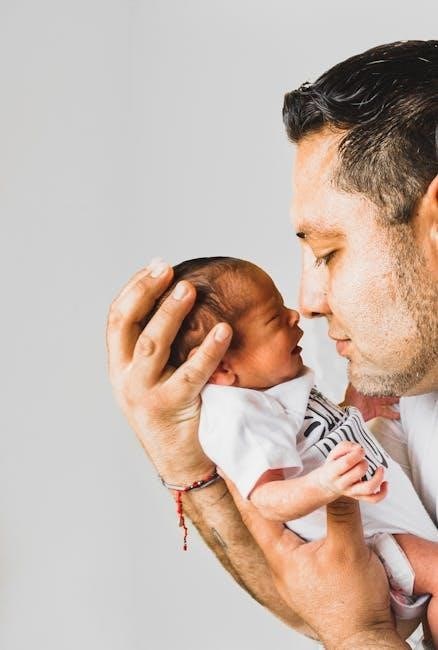
TOG Ratings and Room Temperature
The relationship between TOG ratings and room temperature is crucial for ensuring your baby’s comfort and safety during sleep․ TOG, which stands for Thermal Overall Grade, is a unit of measurement that indicates the thermal insulation of a fabric or garment, in this case, a baby sleep bag․ The higher the TOG rating, the warmer the sleep bag․ Understanding how TOG ratings correspond to different room temperatures is essential for preventing overheating or keeping your baby too cold․ A 0․5 TOG sleep bag is designed for warm rooms, typically above 24°C (75°F), and is suitable for summer months․ A 1․0 TOG sleep bag is ideal for room temperatures between 20°C and 24°C (68°F and 75°F), often used during warmer seasons or in well-heated homes․ A 2․5 TOG sleep bag is a versatile option for year-round use, suitable for room temperatures between 16°C and 20°C (61°F and 68°F)․ This is a common choice for standard nursery temperatures․ For colder rooms, below 16°C (61°F), a 3․5 TOG or higher sleep bag is recommended to provide adequate warmth and insulation․ It’s important to monitor the room temperature regularly using a reliable thermometer․ Consider factors such as the season, the insulation of your home, and whether you are using heating or cooling systems․ Always check your baby for signs of discomfort, such as sweating, flushed skin, or shivering, and adjust the TOG rating and clothing layers accordingly․ Remember that these are general guidelines, and individual babies may have different needs based on their metabolism and other factors․ Using a combination of appropriate TOG ratings and suitable clothing layers will help create a comfortable and safe sleep environment for your baby․
How to Choose the Right TOG Rating
Choosing the right TOG rating for your baby’s sleep bag involves several important considerations to ensure their comfort and safety throughout the night․ TOG, or Thermal Overall Grade, measures the thermal resistance of a fabric; the higher the TOG rating, the warmer the sleep bag․ Start by monitoring the temperature of your baby’s room regularly using a reliable room thermometer․ This will provide a baseline for selecting the appropriate TOG rating․ Generally, a 0․5 TOG sleep bag is suitable for warm rooms above 24°C (75°F), typically during summer months․ A 1․0 TOG sleep bag is ideal for room temperatures between 20°C and 24°C (68°F and 75°F), often used in warmer seasons or well-heated environments․ A versatile 2․5 TOG sleep bag is appropriate for year-round use, fitting room temperatures between 16°C and 20°C (61°F and 68°F), which is a standard nursery temperature․ For colder rooms below 16°C (61°F), opt for a 3․5 TOG or higher sleep bag to provide sufficient warmth․ Consider the season and the insulation of your home․ In summer, a lower TOG rating is necessary to prevent overheating, while winter may require a higher rating for adequate warmth․ Also, think about the clothing your baby will wear under the sleep bag․ Adjust the layers based on the TOG rating and room temperature․ For example, a higher TOG sleep bag may require fewer layers of clothing․ Always check your baby for signs of being too hot or too cold․ Signs of overheating include sweating, flushed skin, and rapid breathing, while signs of being too cold include shivering and cold extremities․ Adjust the TOG rating or clothing layers accordingly to maintain a comfortable body temperature․ Keep in mind that individual babies may have different needs, so it’s essential to monitor your baby’s comfort level and adjust as necessary․ By carefully considering these factors, you can select the right TOG rating for your baby’s sleep bag, ensuring they sleep soundly and safely․
Adjusting Baby’s Clothing Based on TOG and Temperature
Adjusting your baby’s clothing based on the TOG rating of their sleep bag and the room temperature is crucial for ensuring their comfort and safety throughout the night․ The TOG (Thermal Overall Grade) rating indicates the warmth of the sleep bag, and the appropriate clothing layers should complement this to prevent overheating or chilling․ Start by assessing the room temperature using a reliable thermometer․ This will help you determine the base layer of clothing needed․ For warmer room temperatures, typically above 24°C (75°F), a very low TOG sleep bag (0․5 TOG) might be used with just a diaper or a lightweight cotton onesie․ This prevents the baby from overheating while still providing a sense of security․ When the room temperature is between 20°C and 24°C (68°F and 75°F), a 1․0 TOG sleep bag can be paired with a lightweight long-sleeved bodysuit or pajamas․ Ensure the fabric is breathable, such as cotton or bamboo, to allow for adequate ventilation․ For a standard nursery temperature of 16°C to 20°C (61°F to 68°F), a 2․5 TOG sleep bag is often ideal․ Underneath, dress your baby in a long-sleeved bodysuit and footed pajamas or a lightweight sleepsuit․ The layers should provide enough warmth without causing the baby to sweat․ In colder room temperatures, below 16°C (61°F), a 3․5 TOG or higher sleep bag is necessary․ Dress your baby in a thermal base layer, such as a long-sleeved merino wool bodysuit, followed by footed pajamas or a fleece sleepsuit․ Ensure the layers are snug but not restrictive, allowing for comfortable movement․ Always avoid overdressing your baby, as this can lead to overheating, which is a risk factor for SIDS (Sudden Infant Death Syndrome)․ Regularly check your baby’s temperature by feeling their chest or the back of their neck․ If their skin feels clammy or they are sweating, remove a layer of clothing․ If their extremities feel cold, add an extra layer․ Consider using a wearable blanket or sleep sack instead of loose blankets, as they are safer and help maintain a consistent temperature․ Remember that these are general guidelines, and individual babies may have different needs․ Monitor your baby closely and adjust the clothing layers as necessary to ensure they are comfortable and sleeping safely․
Safety Considerations and Guidelines
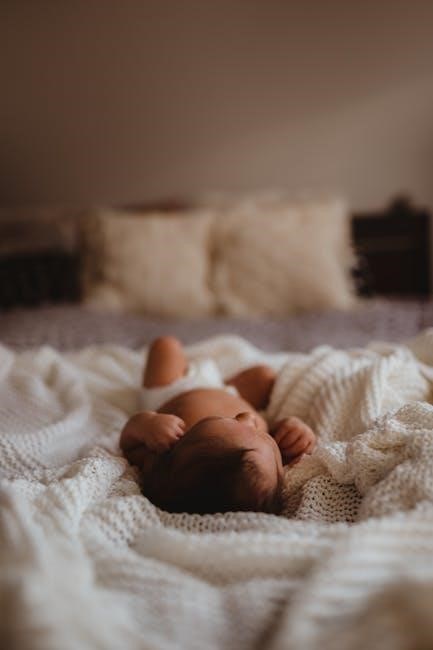
When using baby sleep bags, several safety considerations and guidelines must be followed to ensure your baby’s well-being and reduce the risk of potential hazards․ First and foremost, always choose a sleep bag that is the correct size for your baby․ The neck and armholes should fit snugly to prevent the baby from slipping down inside the bag, which can pose a suffocation risk․ Ensure that the sleep bag meets safety standards and certifications, such as BS EN 16781:2018, which indicates that the product has been tested for safety and compliance․ Avoid sleep bags with hoods, drawstrings, or loose ribbons, as these can be potential choking hazards․ Regularly inspect the sleep bag for any signs of wear and tear, such as loose seams, broken zippers, or detached embellishments․ Repair or replace the sleep bag if any damage is found․ Always place your baby on their back to sleep, as recommended by safe sleep guidelines, even when using a sleep bag․ Avoid using additional blankets or bedding inside the sleep bag, as this can increase the risk of overheating and suffocation․ Monitor your baby’s temperature regularly to ensure they are not too hot or too cold․ Check the baby’s chest or the back of their neck to gauge their temperature, and adjust clothing layers accordingly․ Be mindful of the room temperature and choose a sleep bag with the appropriate TOG rating for the environment․ Overheating is a significant risk factor for Sudden Infant Death Syndrome (SIDS), so it is crucial to avoid overdressing your baby․ Ensure the sleep bag is made from breathable materials, such as cotton, bamboo, or merino wool, to allow for adequate ventilation and reduce the risk of overheating․ Never use a sleep bag in conjunction with other potentially hazardous items, such as pillows, bumpers, or positioners․ These items can obstruct the baby’s airway and increase the risk of suffocation․ If using a sleep bag with sleeves, ensure the sleeves are not too long and do not restrict the baby’s movement․ Regularly wash the sleep bag according to the manufacturer’s instructions to maintain hygiene and prevent the build-up of allergens or irritants․ Always supervise your baby while they are wearing a sleep bag, especially during the initial stages of use, to ensure they are comfortable and safe․ By adhering to these safety considerations and guidelines, you can create a safe and comfortable sleep environment for your baby while using a sleep bag․
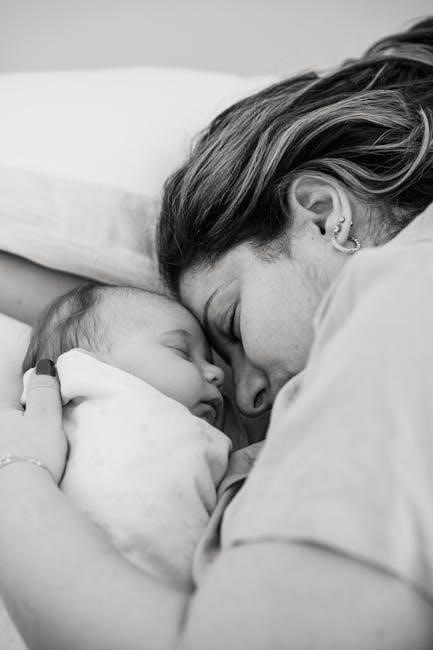
Number of Sleep Bags Needed
Determining the ideal number of baby sleep bags to have on hand depends on several factors, including your baby’s age, frequency of use, washing schedule, and budget․ As a general guideline, it is recommended to have at least three sleep bags in your rotation․ This allows for one sleep bag to be in use, one in the wash, and one as a spare, ensuring you always have a clean and suitable option available․ For newborns and infants who may experience frequent spit-ups or diaper leaks, having four to five sleep bags can be beneficial to accommodate more frequent changes․ As your baby grows and their feeding habits become more established, three sleep bags may suffice․ Consider having a variety of TOG ratings to suit different room temperatures and seasons․ A lightweight sleep bag (0․5-1;0 TOG) is ideal for warmer months or nurseries, while a medium-weight sleep bag (2․5 TOG) is suitable for year-round use in moderate climates․ A heavier-weight sleep bag (3․5 TOG or higher) is best for colder months or cooler nurseries․ If you live in an area with significant temperature fluctuations, having a range of TOG ratings will ensure your baby remains comfortable throughout the year․ Additionally, consider having sleep bags in different sizes to accommodate your baby’s growth․ As your baby gets older, they will outgrow their current sleep bag, so it is essential to have the next size up ready․ Some sleep bags are designed with adjustable features, such as snaps or zippers, to allow for a more customized fit and extended use․ When selecting sleep bags, prioritize quality and durability․ Choose sleep bags made from breathable, natural materials such as cotton, bamboo, or merino wool, which are gentle on your baby’s skin and help regulate their body temperature․ Look for sleep bags with reinforced seams and sturdy zippers that can withstand frequent washing and wear․ Investing in high-quality sleep bags will ensure they last longer and provide better value for your money․ Ultimately, the number of sleep bags you need is a personal decision based on your individual circumstances and preferences․ However, having at least three sleep bags in varying TOG ratings and sizes is a good starting point to ensure your baby always has a safe, comfortable, and suitable option available for a restful night’s sleep․




